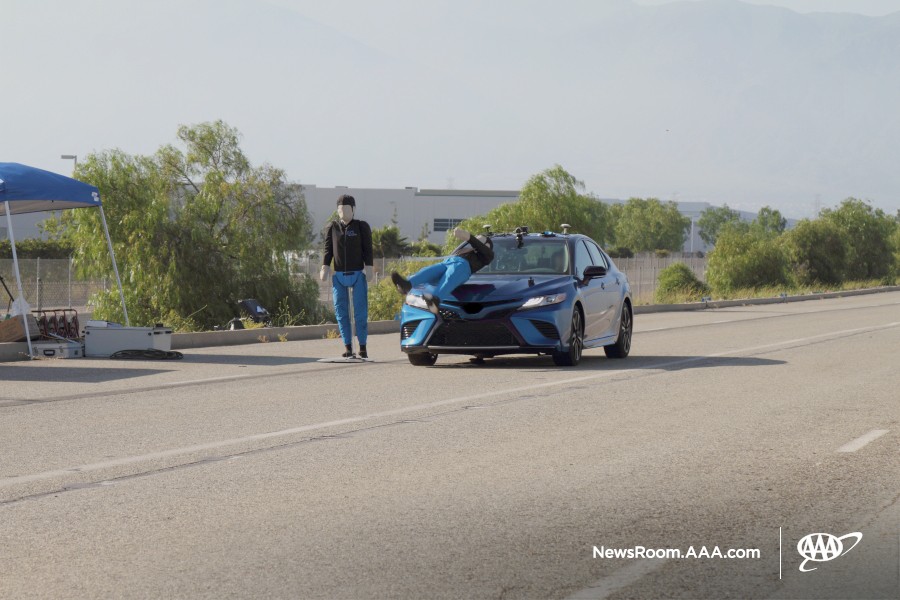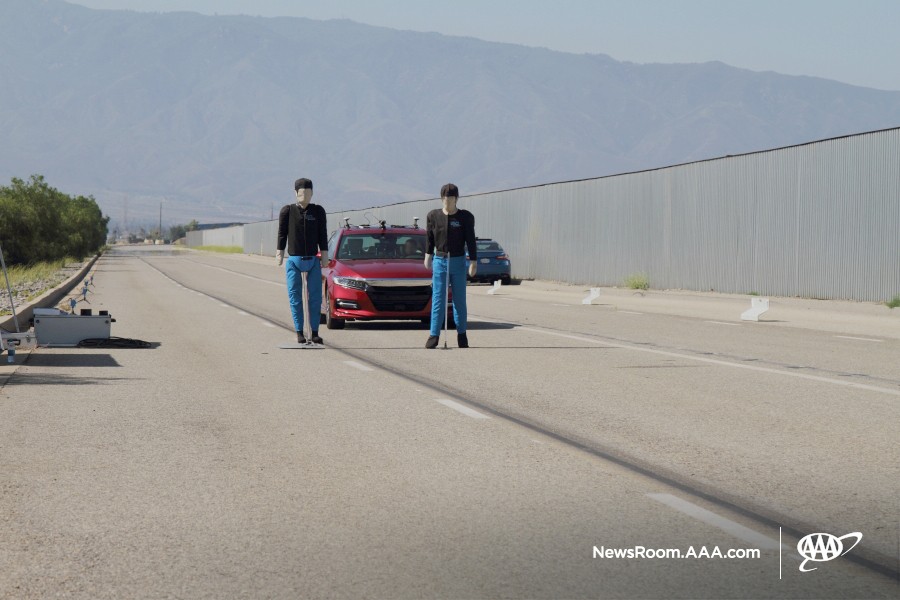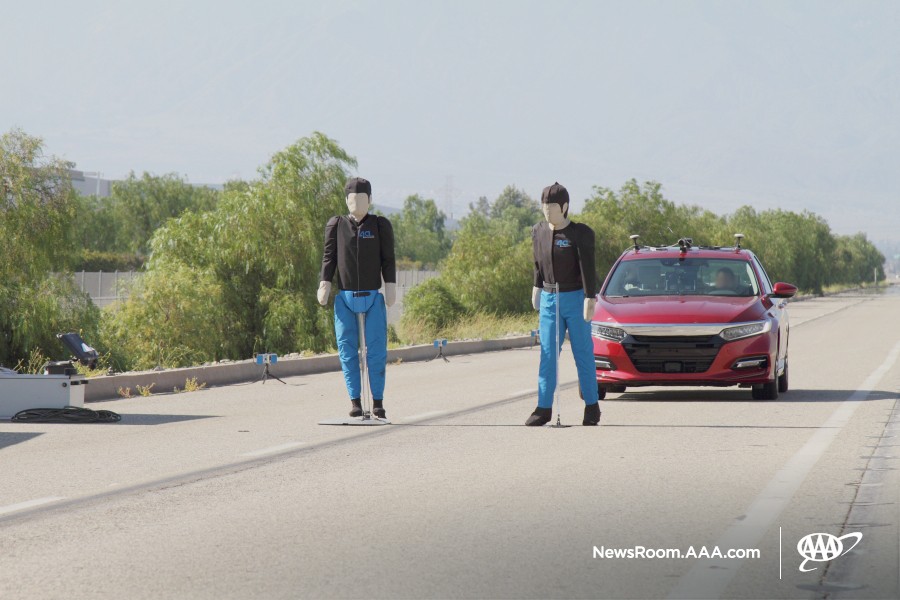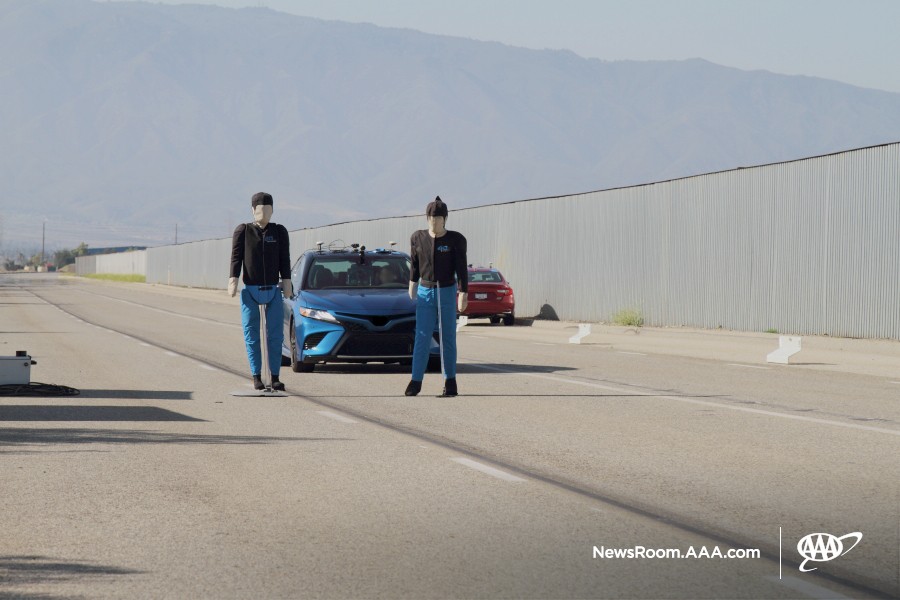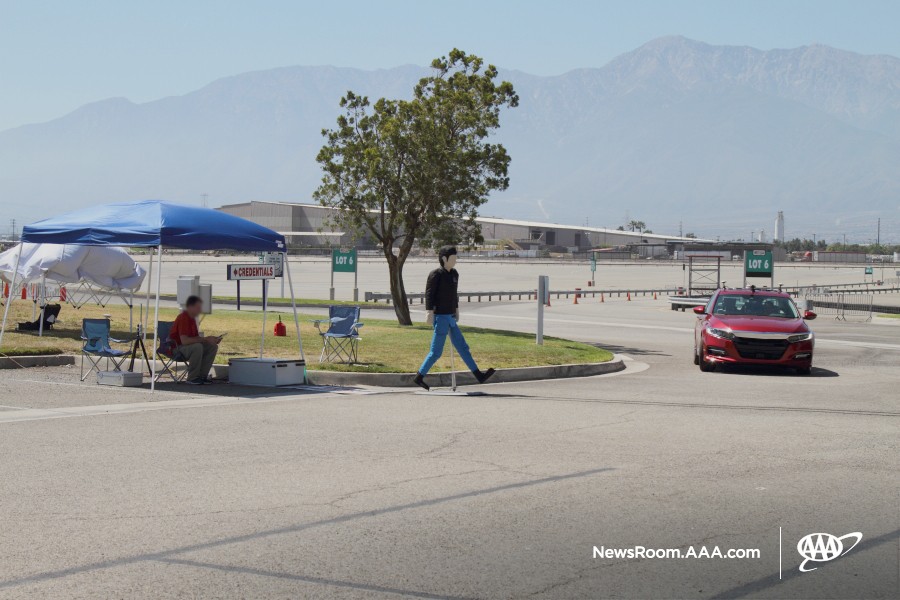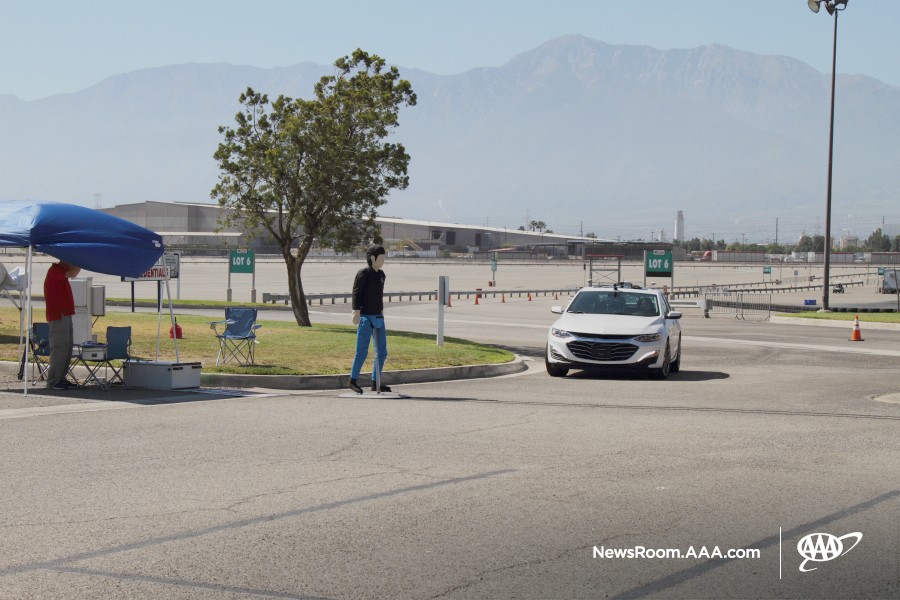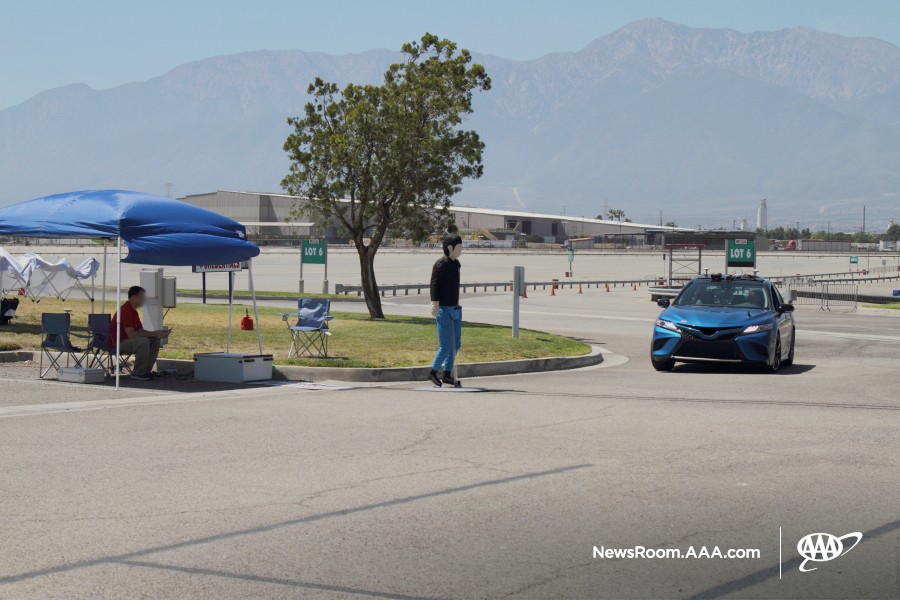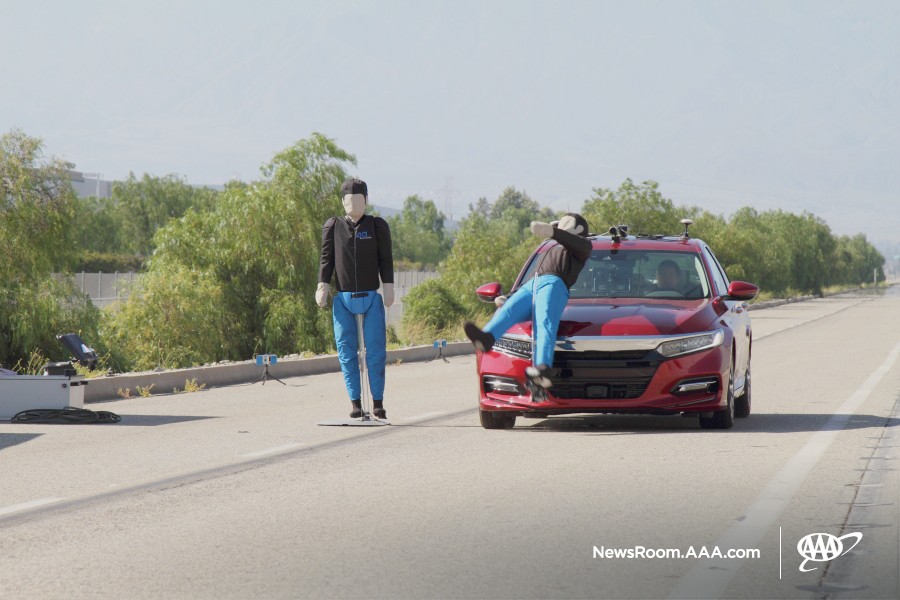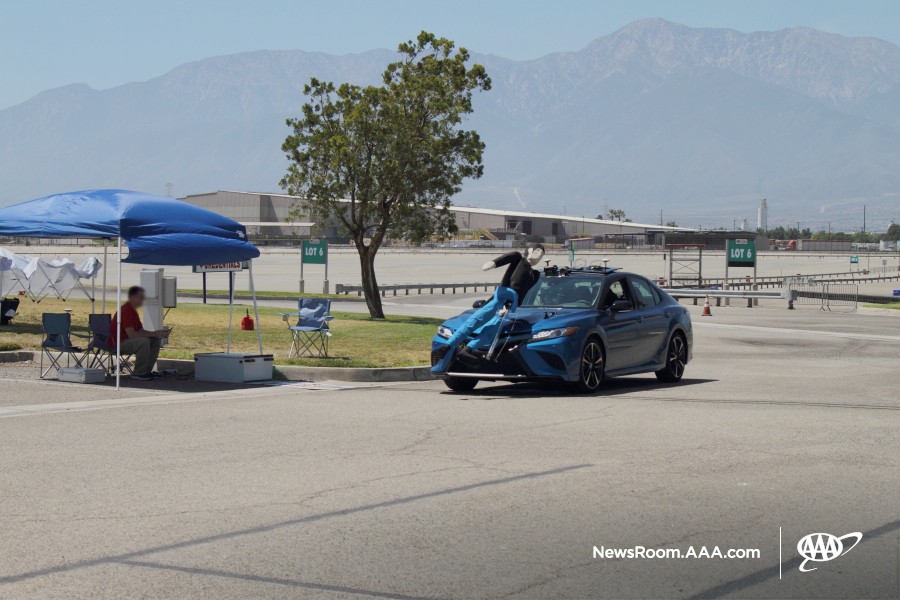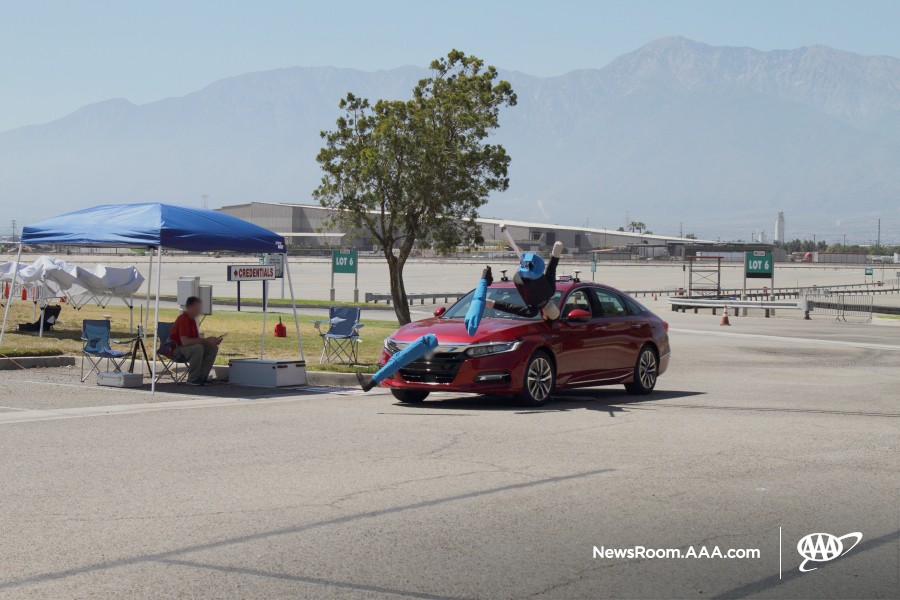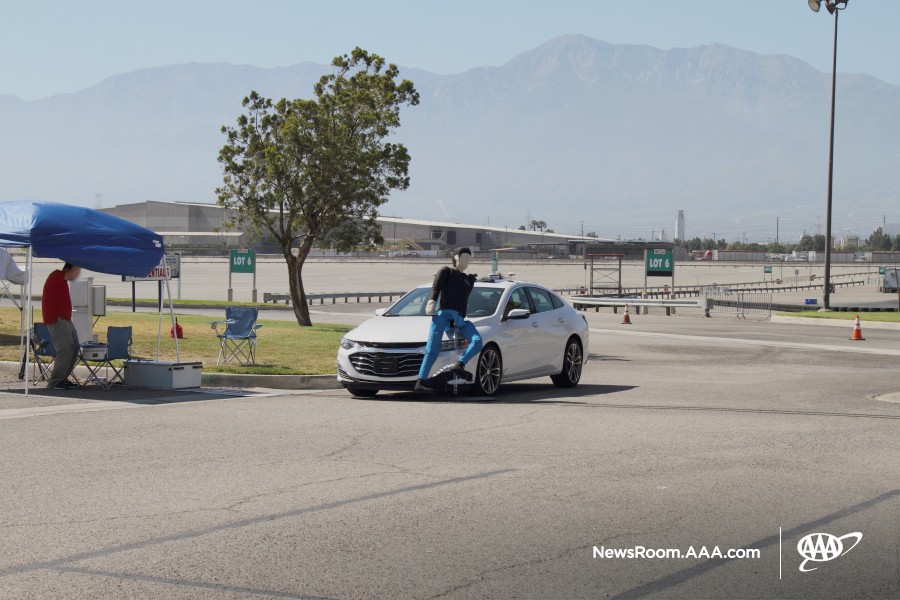Automatic emergency braking systems with pedestrian detection are becoming more common, but a recent test by AAA shows they’re far from perfect.
The test examined four mid-size sedans – including the Chevrolet Malibu, Honda Accord, Tesla Model 3 and Toyota Camry – equipped with an automatic emergency braking system with pedestrian detection. They were put through a series of tests which were designed to simulate an adult walking in front of the vehicle, a child darting out into traffic from between two parked cars, a vehicle turning onto an adjacent road with an adult crossing, and two adults standing by the side of the road with a vehicle approaching.
Also Read: New Study Finds Rear Automatic Braking Can Reduce Collisions By 81%
The technology proved to be pretty lackluster as the best result was recorded with an adult walking in front of vehicles traveling at 20 mph (32 km/h). In this scenario, the emergency braking systems prevented 40% of collisions. When the speed was increased to 30 mph (48 mph), “most systems failed to avoid a collision with the simulated pedestrian target.”
If that wasn’t bad enough, the child darting out into traffic scenario saw a collision occur 89% of the time. Likewise, the systems were completely ineffective after making a turn and all the test vehicles hit the pedestrian in this scenario. They were also judged to be “completely ineffective at night” which AAA says is alarming as 75% of pedestrian fatalities occur after dark.
Despite the less than impressive showing, AAA supports the continued development of pedestrian detection systems and wants to see automakers improve their functionality. This is important as the group said pedestrian fatalities have been on the rise since 2010 and roughly 6,000 pedestrians are killed every year in the United States.





